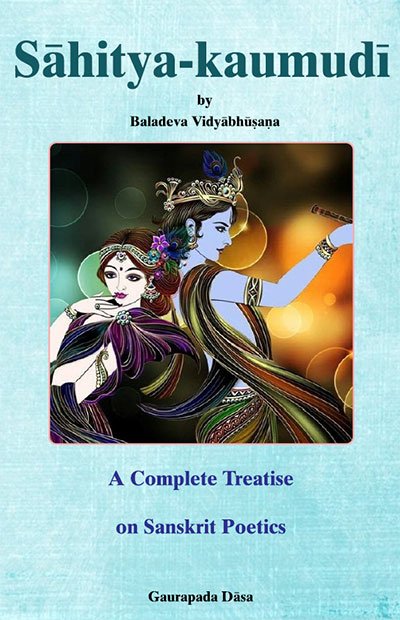Sahitya-kaumudi by Baladeva Vidyabhushana
by Gaurapada Dāsa | 2015 | 234,703 words
Baladeva Vidyabhusana’s Sahitya-kaumudi covers all aspects of poetical theory except the topic of dramaturgy. All the definitions of poetical concepts are taken from Mammata’s Kavya-prakasha, the most authoritative work on Sanskrit poetical rhetoric. Baladeva Vidyabhushana added the eleventh chapter, where he expounds additional ornaments from Visv...
Text 10.191 [Sūkṣma]
43. Sūkṣma
कुतोऽपि लक्षितः सूक्ष्मोऽप्य् अर्थोऽन्यस्मै प्रकाश्यते ॥ १०.१२२cd ॥
धर्मेण केनचिद् यत्र तत् सूक्ष्मं परिचक्ष्यते ॥ १०.१२३ab ॥
kuto'pi lakṣitaḥ sūkṣmo'py artho'nyasmai prakāśyate || 10.122cd ||
dharmeṇa kenacid yatra tat sūkṣmaṃ paricakṣyate || 10.123ab ||
kutaḥ api—somewhere; lakṣitaḥ—indicated; sūkṣmaḥ—subtle; api—although; arthaḥ—a meaning; anyasmai—to another; prakāśyate—is manifested; dharmeṇa—attribute [which causes a remembrance[1] ]; kenacit—by some; yatra—when; tat—then; sūkṣmam—the ornament called sūkṣma; paricakṣyate—is called.
When a subtle sense, indicated from either a drawing or a gesture, is manifested unto another person by means of some attribute which causes the understanding, that is sūkṣma (subtle hint).
kuto'py ākārād iṅgitād vā sūkṣmaḥ sūkṣma-dhī-gamyaḥ.
The words kuto’pi mean ākārād iṅgitād vā (either from a drawing or from a gesture). The ornament is called sūkṣma because the hint is understood by someone whose intelligence is subtle.
